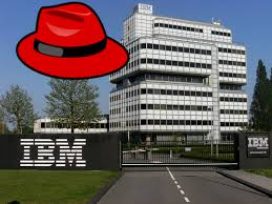Why Marketing Might be Key to IBM Fixes
When IBM announced Q3 2020 earnings this week, the market was generally disappointed with the results. But if investors were looking for clarity in IBM’s report, they had to dig for it. The main obstacle? IBM’s language.
Better messaging might be a key to streamlining product lines and marketing as the company prepares for a breakup that will highlight its hybrid cloud acumen. Since taking charge in April, CEO Arvind Krishna continues to hammer home IBM’s mission to “[redefine] our future as a hybrid cloud platform and AI company.”
The challenge is figuring out how IBM categorizes those hybrid cloud and AI products and services. Put plainly, IBM’s taxonomy is a little confusing. Its marketing language is a tangle of terms that overlap in mysterious ways. When this argot is used for business, the result is like listening to scripture whose key is available only to the Armonk anointed. IBM employees even have a name for this (they've told us): It's called "blue-washing."
Let’s look at a few recent examples, starting with IBM’s announcement earlier this month of plans to spin off most of its Global Technology Services (GTS) division into a new public company.
At first, it sounded like most of GTS was going to “NewCo.” Journalists got it wrong; investors pretended to understand. But in the end, it was clear that only the Managed Infrastructure Services portion of GTS was heading out. Many other services were staying put with IBM.
Let’s revisit the chart IBM presented to "clarify" the situation:
Source: IBM
There are a few challenges here. First of all, you have to figure out that GTS is different from GBS (Global Business Services) — regardless of the fact that the terms sound alike on fuzzy conference call connections.
Next, comparing the chart above to an earlier chart from IBM’s second-quarter 2020 earnings presentation (shown below) raises additional questions:
Source: IBM
Are Managed Infrastructure Services the same as Infrastructure & Cloud Services? How are Application Management Services different from Technology Support Services? Reading these, it's hard to tell.
A Mystifying Mountain
IBM offers plenty of examples of its mystifying marketing mumbling aside from the NewCo announcement. This week’s earnings call was rife with them. Here’s a sampling of remarks made by James Kavanaugh, IBM SVP and CFO, in a conference call with financial analysts to discuss the results:
Now, I'll turn to the segment performance, beginning with cloud and cognitive software. Revenue was up 6%, driven by cloud and data platforms.… Software has a seasonally smaller transactional base in the third quarter. In a challenging transactional environment, this benefited us. Our cloud and data platforms delivered 19% revenue growth.
Hang on. What’s a transactional base? What’s a data platform? Is it IBM Cloud? Is it Series Z? Both? What about Red Hat? Scanning the earnings transcript, we find the word platform used 35 times to define all of these and more.
Another example:
Within services, this quarter, we added about 125 services clients utilizing Red Hat technology. And our GBS cloud-related signings were up over 25%. The platform model delivers compelling economics. Our full-stack capabilities drove over $24 billion of cloud revenue over the last 12 months, which is up 25%.
Isn’t GBS supposed to peddle Red Hat, so that signings would be included among the new 125 clients? Which full stack is referred to here? The full stack of Red Hat software? The full stack of technological and/or business services?
Cloudy Cognitive Software
Perhaps nothing demonstrates IBM’s muddled marketing better than the way it reports its cloud earnings. Who can say they’ve never paused over the term “Cloud & Cognitive Software”? Who can claim not to have winked and chuckled at how IBM has stacked the terminology deck in its favor?
So far, it seems the industry at large goes along with IBM, claiming to know what’s really in this brain-salad stew of tech and business nuggets. Financial analysts seem to ignore much of it, focusing mainly on the basic numbers. Some observers may be just too embarrassed to admit they don't know what the heck IBM's talking about.
But fixing this messaging and the organization of the products will be key to success at the new IBM. One might look at the Microsoft cloud turnaround as an example. With Microsoft's revamp around cloud in 2018, the company did a better job of re-organizing product lines so that it could measure and communicate growth in the cloud -- and downplay legacy products.
The goal for IBM reflects a similar possibility: The company could reframe its cloud offerings in a more understandable way. IBM’s latest move to spin off NewCo is a valiant effort to do this. But the company will have to do a much better job of communicating the reorg and product lines if it wants to enjoy great success.





